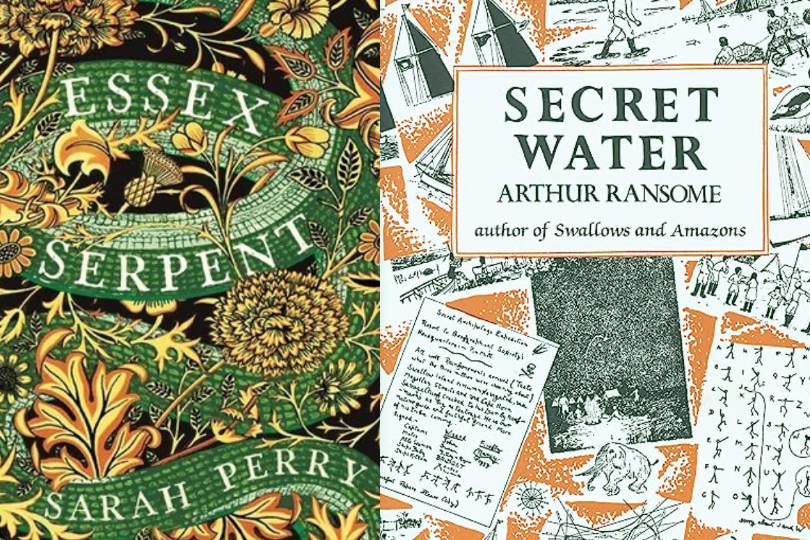
Guest blog by Rosie Buckley
“The world is a book, and those who do not travel read only one page”.
This quote by Saint Augustine captures the essence of wanderlust and its connection to the written word. For writers, embarking on adventures can serve as a catalyst to ignite their creative flame. Location that has inspired many authors is Essex and its surrounding areas. This charming part of England, with its diverse landscapes and rich history, has been the backdrop for many enchanting tales.
The Essex Serpent by Sarah Perry
The novel is set in Victorian Essex and paints a vivid picture of the county’s coastal villages and marshlands. The mythical Essex Serpent adds an element of mystery and intrigue to the narrative. The blending of historical fiction, gothic horror, and romance in the backdrop of Essex’s natural beauty can inspire fantasy and horror writers.
Hiding From The Light by Barbara Erskine
This novel intertwines the modern world with the ancient, through a tale of witches and spirits in Essex. The enchanting landscape of Essex creates an atmosphere of suspense and supernatural dread, offering abundant inspiration for writers interested in the paranormal genre.
Secret Water by Arthur Ransome
Part of the ‘Swallows and Amazons’ series, this adventurous children’s book uses the marshes of Essex as a playground for imagination. The natural settings serve as the foundation for magical and adventurous tales, demonstrating the potential of such landscapes to inspire writers, particularly those interested in children’s literature.
Cover Her Face by P.D. James
This detective novel, the first featuring Adam Dalgliesh, uses an Essex country house as the scene of its crime. The seemingly serene setting transformed into a place of suspense and mystery shows how ordinary locations can be turned into intriguing settings for crime thrillers. Understanding how P.D. James uses location to build tension and mystery can provide practical techniques for crafting compelling crime or mystery narratives.
Cambridge Blue: The Astonishing Murder Mystery Debut by Alison Bruce
Riveting thriller set in Cambridge, England. The novel introduces DC Gary Goodhew, a young detective with a knack for solving complex cases. Cambridge is steeped in history and tradition. Exploring its historic sites, colleges, and museums can provide a deep understanding of the city’s past, which can inspire historical narratives or add depth to contemporary stories.
Sissinghurst: Vita Sackville-West and the Creation of a Garden
A captivating exploration of one of the world’s most iconic gardens, located in Kent, England. The book chronicles the journey of poet and writer Vita Sackville-West and her husband Harold Nicolson, as they transform a dilapidated property into a breath-taking garden. Inspiring testament to the power of dedication, creativity, and love for nature can help writers find a sanctuary and spark a creative flare when visiting Sissinghurst.
Great Expectations by Charles Dickens
A moving coming-of-age novel that explores themes of class, love, and moral redemption. The story follows orphan Pip’s journey from a blacksmith’s apprentice to a gentleman in London society. Walking the same streets and viewing the same landscapes as Dickens can inspire writers in their own storytelling. It can trigger ideas for plotlines, character development, or atmospheric descriptions.
Final thoughts
Visiting new locations can greatly stimulate a writer’s creativity and enhance their narratives. Being in a different setting exposes writers to diverse cultures, landscapes, and experiences, all of which can fuel story ideas and character development. It provides first hand experience of the sensory details – sights, sounds, smells – that make descriptions more vivid and engaging.
It can also deepen a writer’s understanding of different perspectives, enriching their portrayal of characters and situations. Moreover, exploring unfamiliar places can evoke emotions and thoughts that can be woven into narratives, adding depth and authenticity. In essence, travel can broaden a writer’s creative horizons and infuse their work with fresh insights and originality.
Each of these books offers a unique perspective, turning its quaint towns, lush marshes, and historical landmarks into captivating literary landscapes. As writers, we can learn from these authors and let the places we visit shape our stories, adding depth, colour, and authenticity to our narratives. After all, every location has a story to tell, and our job as writers is to listen and bring these stories to life.


